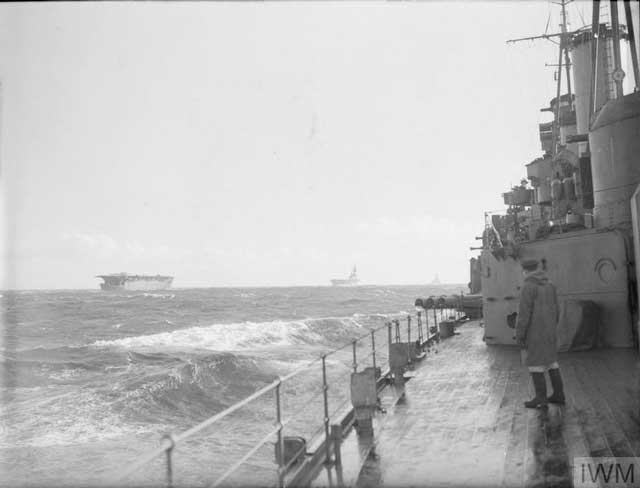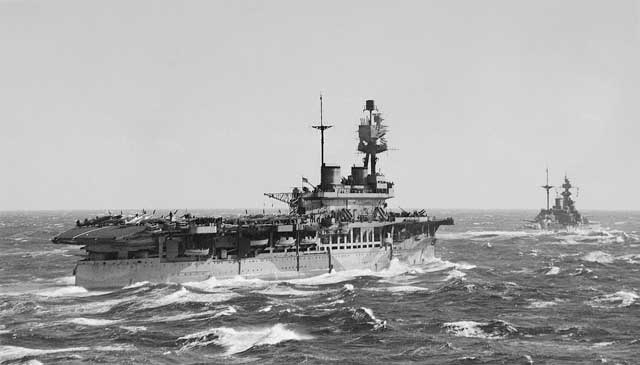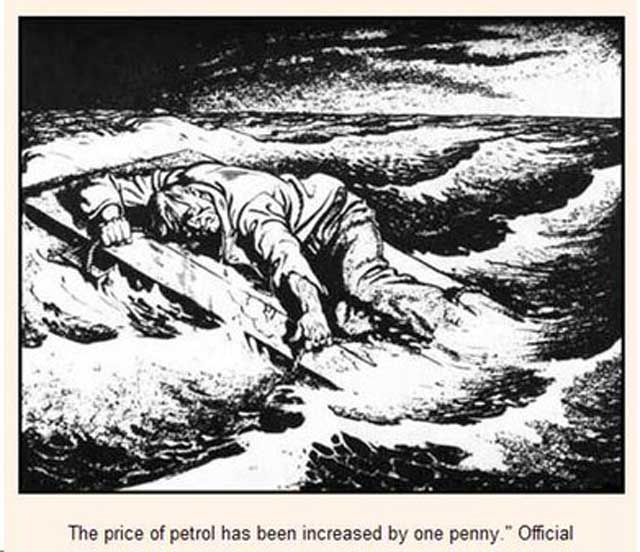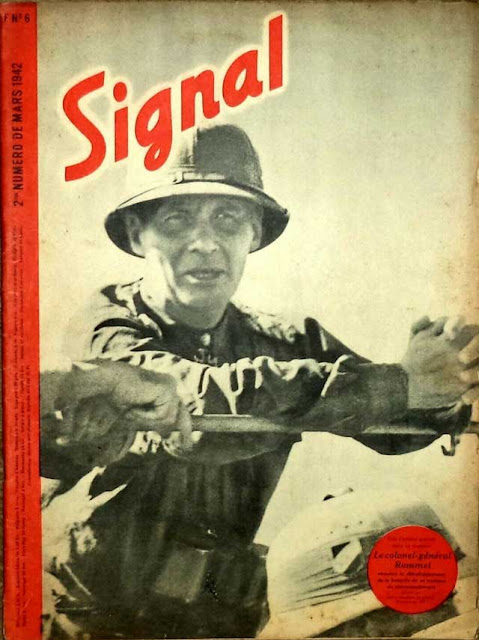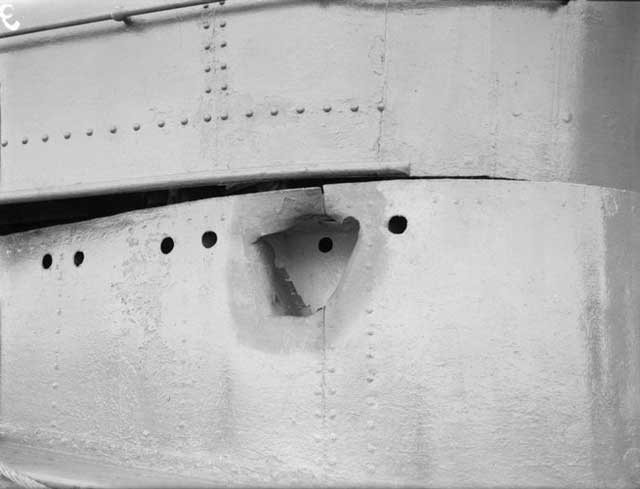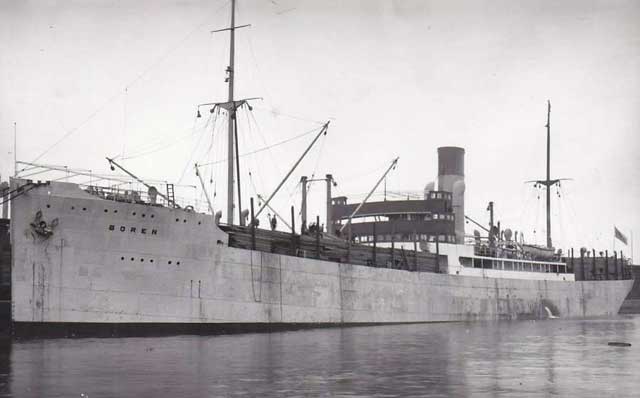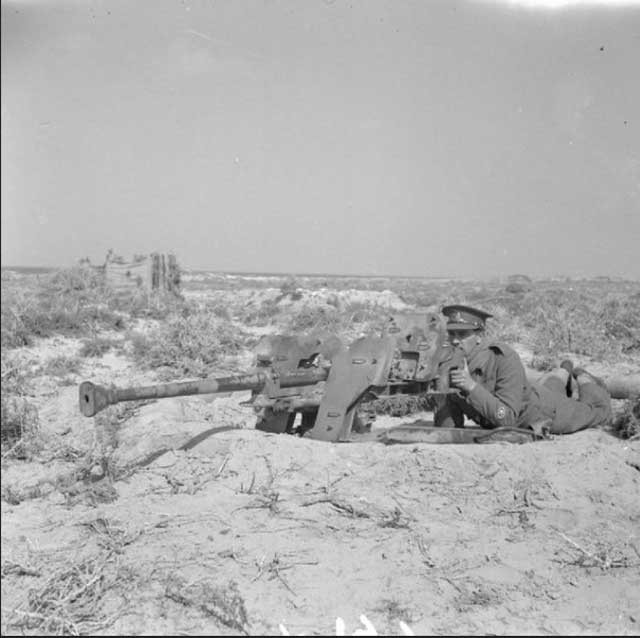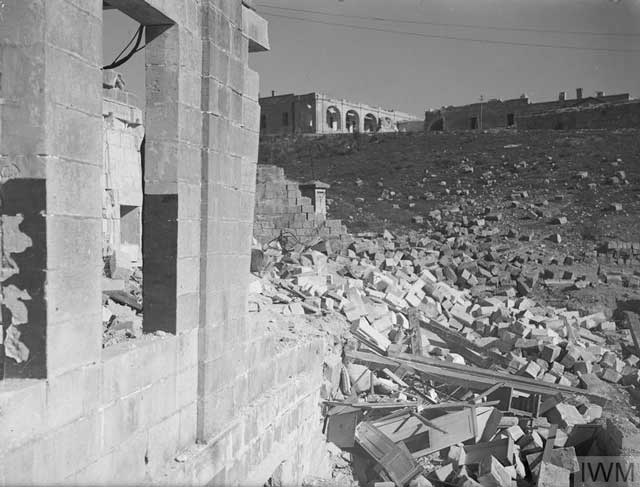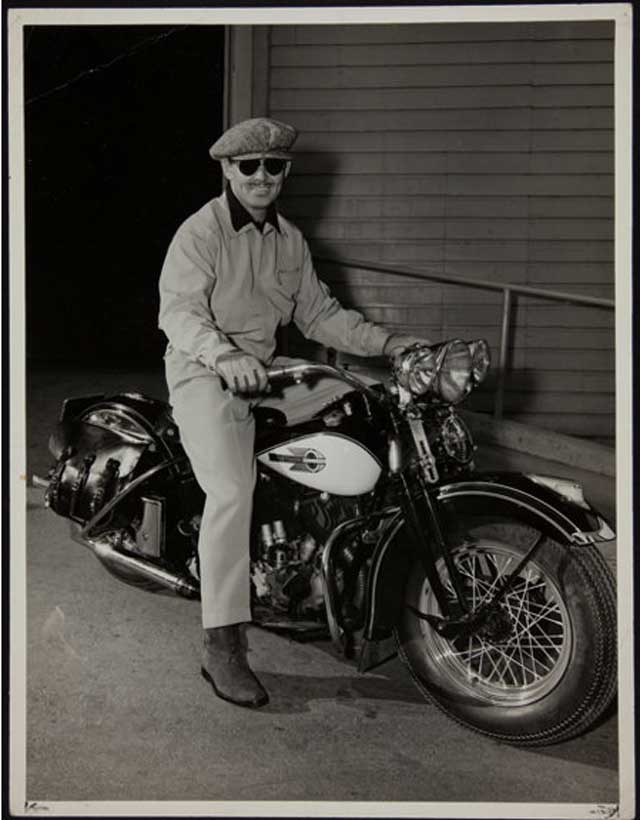Sunday 8 March 1942
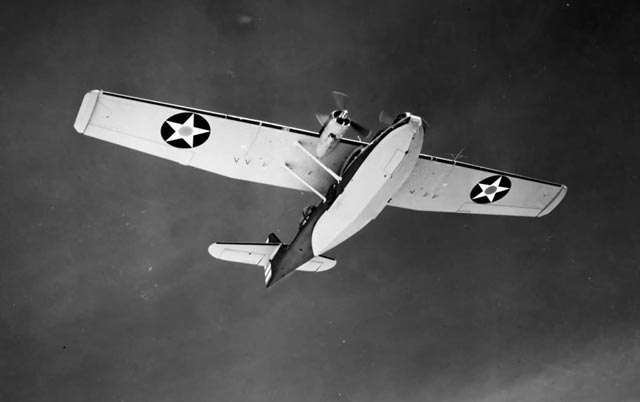 |
| PBY-5A on 8 March 1942 (USAF). |
The Japanese invasion of Salamaua–Lae begins when a convoy arrives in the Huon Gulf. Troops land at Salamaua (144th Regiment) and Lae (2nd Maizuru Special Naval Landing Force) without interference. A RAAF Hudson (No. 32 Squadron) attacks the convoy and scores a hit on a large transport that sinks or is beached. The US Navy is preparing a raid by aircraft carriers USS Lexington and Yorktown against the Japanese landing force, but it will take days to launch.
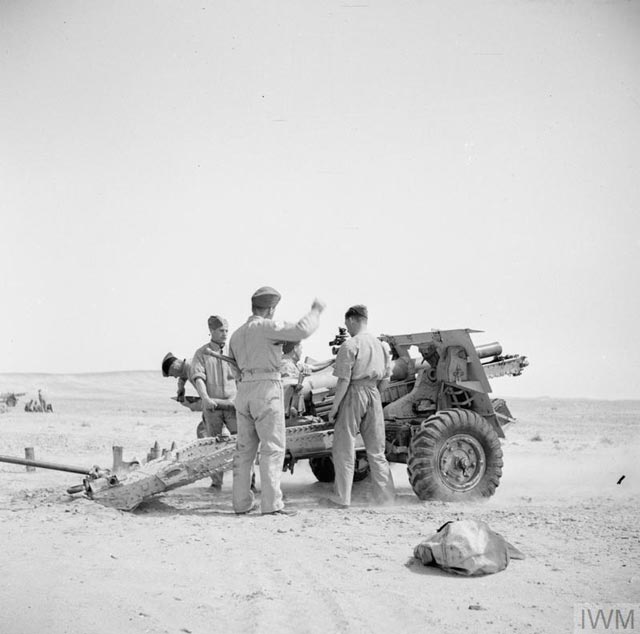 |
| "25 pounders going into action in support of an Infantry Brigade during training in the Western Desert, 8 March 1942." © IWM (E 9134). |
There are still determined Australian troops, "Blackforce," under Lieutenant-Colonel Arthur S. Blackburn in the hills at Tjikadjang which refuse to surrender. This is a blocking position which at least theoretically allows Allied forces on the south coast to continue evacuating, though those operations, by and large, are over. Blackburn has no hope of holding out for long but remains holed up for several days despite repeated radioed orders to surrender from RAF Air Vice-Marshal Maltby and Major General Hervey Sitwell, General Officer Commanding British Troops Java. Ultimately, Blackburn makes the very tough decision to surrender for the (presumed) good of his men. What the British do not know is that a large fraction (up to 25% in some cases) of Allied prisoners taken on Java will perish in the camps.
 |
| PBY-5A, 8 March 1942 (USAF). |
The front on Bataan in the Philippine Islands is relatively quiet. General Douglas MacArthur, Commanding General U.S. Army Forces, Far East, issues a communique stating that his opponent, General Homma Masaharu, has committed suicide out of frustration. Homma is far from dead, however, and sees the report of his supposed death with surprise. MacArthur apparently is engaging in psychological warfare, because the Japanese high command is upset with Homma for the stalemate at Bataan. It is unclear if it is coincidental or not, but staff officers arrive from Tokyo and insult Homma. They tell him to stop living the high life in Manila and finish the battle. Just to make their point crystal clear, they transfer some of Homma's staff to Manchuria, not considered a particularly desirable posting. Homma quickly begins planning an offensive. He secures a promise of reinforcements from Shanghai, some crack troops of the 65th Brigade and 4th Infantry Division, to resume the advance.
Dutch minesweeper Jan van Amstel is sunk by a Japanese destroyer in the Madura Strait near Java.
Japanese submarine HIJMS I-25 sends its Yokosuka E14Y1, "Glen," to fly over Wellington, Australia. As with other reconnaissance flights, the Allies do not spot it.
Eastern Front: The Soviets under General Kozlov are preparing to resume their offensive on the Crimea. They are under strict orders from Stalin to get moving quickly, who has taken a personal interest in the situation (he likes to vacation in the south). Kozlov's plan is to break the German defensive strongpoint at Koi-Asan, hitting the Germans where they are strongest. The Germans also are reinforcing their positions on the Parpach Narrows. The Germans are bringing in anti-tank StuG units while the Red Army is building up its tank force.
 |
| "Low-level oblique aerial photograph was taken during the course of a daylight attack on the Matford automotive works at Poissy, France." 8 March 1942. © IWM (C 2282). |
After dark, RAF Bomber Command sends 211 bombers (211 aircraft, 115 Wellingtons, 37 Hampdens, 27 Stirlings, 22 Manchesters, and 10 Halifaxes) to attack the German manufacturing center of Essen. Despite being led by Gee navigational equipment, the bombers have difficulty finding the target, some Krupp installations, and only 168 actually claim to bomb the factories. The raid illustrates the limitations of RAF direction-finding equipment, as the Gee system can only lead bombers to a city, not a specific target. The factories escape unscathed, but bombs kill ten people with an additional 19 missing. There also are raids by single bombers on the German cities Dortmund, Duisburg, Dusseldorf, Gelsenkirchen, and Oberhausen. Six Blenheim bombers raid the docks of Ostend, with four claiming hits. A group of 13 Wellington and Stirling bombers attack targets in the Netherlands, two bombing Soesterberg Airfield.
 |
| Supermarine Walrus aircraft being catapulted from the cruiser HMS Shropshire between 8 and 12 March 1942 (© IWM (A 8069)). |
 |
| Damage in Lowestoft from the 8 March 1942 Luftwaffe raid (Bert Collyer via Lowestoft Aviation Society). |
German battleship Tirpitz remains at sea on a mission to attack Arctic Convoys QP 8 and PQ 12. Unbeknownst to the Germans, Royal Navy battleship HMS King George V and aircraft carrier Victorious are in the vicinity to provide support to the convoys. The British know of the Tirpitz mission due to Enigma intercepts and are maneuvering into a position to attack. Late in the day, though, German commander Admiral Ciliax decides to return to port. The British still hope to intercept the German battleship with aircraft on the 9th.
 |
| "Bren gun carriers moving off in the Western Desert, 8 March 1942." © IWM (E 9140). |
At Malta, the Axis launches virtually continuous air raids on Luqa Airfield in an attempt to put it out of action. There are 325 bombs dropped. Some time bombs must be dealt with by the bomb disposal forces. There are multiple civilian casualties. Hal Far airfield and other locations also are attacked.
Allied Relations: The British and U.S. governments extend loans of £50 million and $500 million, respectively, to the Nationalist Chinese government.
 |
| Damage to Lowestoft from the 8 March 1942 Luftwaffe raid (Bert Collyer via Lowestoft Aviation Society). |
The 10th Air Force based in Patterson Field, Fairfield, Ohio (near Dayton) begins transferring to India. Its mission is to assist with operations in Burma and, ultimately, perform supply operations to China over the "Hump" (mountains) in the China-Burma-India (CBI) Theater of Operations.
The 5th Air Force in Australia begins moving the 16th and 17th Bombardment Squadrons of the 27th Bombardment Group from Batchelor Field in the Northern Territory to Brisbane. The 3rd Bomber Group leaves Brisbane for Charters Towers.
On Bora Bora, Inshore Patrol Squadron VS-2-D14 begins air operations over the Society Islands.
The US Army Corps of Engineers (with assistance from US and Canadian civilian contractors) begins construction on the Alaskan Highway (ALCAN). Two separate crews set out from each end of the highway and plan to meet somewhere in the middle. The highway is completed by November 1942 and dedicated on 20 November 1942.
 |
| Carmen Miranda is on the cover of the 8 March 1942 Cine Radio Actualidad Magazine [Uruguay]. |
José Raúl Capablanca passes away in New York City from complications of hypertension at the age of 53. Capablanca, ultimately buried in his native Havana, Cuba, is widely considered one of the truly great chess players and consistently either was the World Chess Champion or a serious contender for that title. Many of his books about chess are considered classics.
Richard Anthony Allen is born in Wampum, Pennsylvania. He goes on to a stellar career in professional baseball, becoming a seven-time All-Star for the Philadelphia Phillies and Chicago White Sox.
 |
| Actress Penny Singleton graces the cover of Sunday News magazine on 8 March 1942. |
March 1942
March 1, 1942: Second Battle of Java Sea
March 2, 1942: Huge Allied Shipping Losses at Java
March 3, 1942: Japan Raids Western Australia
March 4, 1942: Second Raid On Hawaii
March 5, 1942: Japan Takes Batavia
March 6, 1942: Churchill Assaults Free Speech
March 7, 1942: British Defeat in Burma
March 8, 1942: Rangoon Falls to Japan
March 9, 1942: Japanese Conquest of Dutch East Indies
March 10, 1942:US Navy attacks Japanese Landings at Lae
March 11, 1942: Warren Buffett's First Stock Trade
March 12, 1942: Japan Takes Java
March 13, 1942: Soviets Attack In Crimea Again
March 14, 1942: The US Leans Toward Europe
March 15, 1942: Operation Raubtier Begins
March 16, 1942: General MacArthur Gets His Ride
March 17, 1942: MacArthur Arrives in Australia
March 18, 1942: Japan Attacks In Burma
March 19, 1942: Soviets Encircled on the Volkhov
March 20, 1942: "I Shall Return," Says MacArthur
March 21, 1942: Germans Attack Toward Demyansk
March 22, 1942: Second Battle of Sirte
March 23, 1942: Hitler's Insecurity Builds
March 24, 1942: Bataan Bombarded
March 25, 1942: Chinese Under Pressure in Burma
March 26, 1942: Win Or Die, Vows MacArthur
March 27, 1942: The Battle of Suusari
March 28, 1942: The St. Nazaire Commando Raid
March 29, 1942: The Free Republic of Nias
March 30, 1942: Japanese-Americans Off Bainbridge Island
March 31, 1942: Japanese Seize Christmas Island
2020



